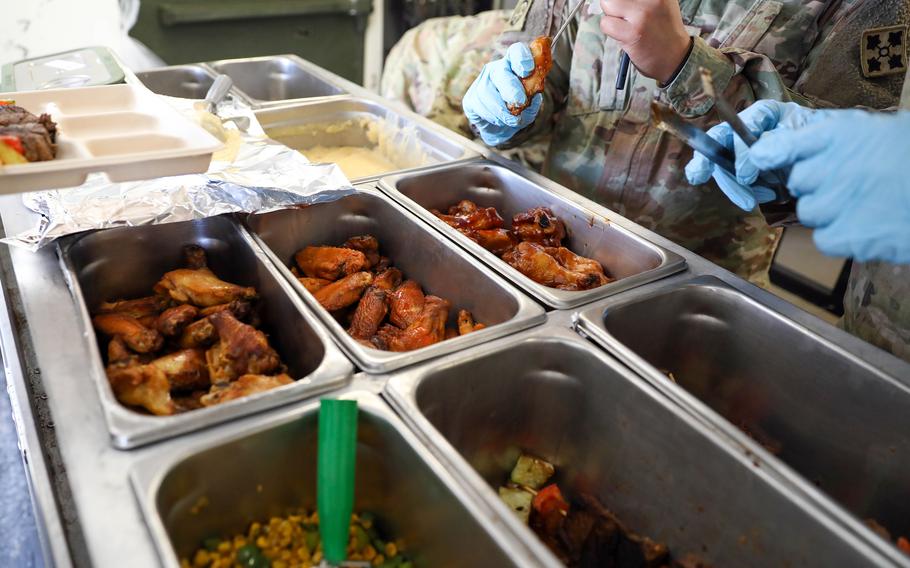
Culinary specialists assigned to the 4th Infantry Division prepare meals at Fort Carson, Colo., March 23, 2023. (Dominique Mendoza/U.S. Army)
The Army spent nearly 70% of the money it collected from enlisted troops’ food allowances on expenses other than meals, even as it struggles to provide them with a nutritious diet, according to a recent report.
Published Friday by Military.com, the report cited financial records the Army provided from 11 of its largest bases.
More than $151 million of the $225 million deducted from soldiers’ paychecks in fiscal year 2024 was “returned to the big pool of Army funds” and spent elsewhere between October 2023 and September 2024, according to an unnamed service official cited by the news site.
The figures apply to junior enlisted soldiers living at the Army bases. At Fort Bragg, N.C., for example, the Army collected $34.6 million from soldiers and spent $16.6 million on food. At Fort Cavazos, Texas, the service garnished $42.5 million and spent $11.7 million on meals, the report said.
Only two of the 11 bases put more than half of the funds toward meals: Joint Base Elmendorf-Richardson, Alaska, collected $7.5 million and spent $4 million, while Fort Bliss, Texas, collected $22 million and spent $11 million, according to the report.
Starting in 2002, enlisted service members began paying for their meals and received a monthly basic allowance for subsistence, or BAS, to offset that cost. BAS is not calculated based on a service member’s income but rather on the Department of Agriculture’s food cost index, which measures the average cost of food.
The allowance is currently $466 per month for enlisted troops and $321 for commissioned officers. The enlisted allowance has risen each year from $369 in 2019, according to the Defense Finance and Accounting Service’s website.
Congress has been aware of the issue. In July 2020, the House Appropriations Subcommittee on Defense reported that the Defense Department may not be “using those funds efficiently or exclusively for the intended purpose” of providing meals to troops.
“The committee is also concerned that the [Defense Department’s] current food system is overly complex and inefficient, which may result in higher costs per meal at dining facilities, unnecessary internal competition between on-base food service providers, and poor food service planning,” the subcommittee’s report said.
Four months earlier, then-Rep. Tim Ryan, D-Ohio, questioned then-Army Secretary Ryan McCarthy about the unspent funds during a House Appropriations hearing.
“Either the Army dining facilities are purchasing and preparing three meals a day per soldier, and then wasting half the food, or the money is not being spent on the soldiers’ food, and it’s being spent on something it’s not appropriated for,” Ryan said during the hearing, according to an Army Times report. “I’m not really sure what’s worse.”
Food prices in the United States are expected to rise by 2.2% in 2025, according to a Department of Agriculture study published Jan. 24. Grocery store purchases are forecast to increase by 1.3%, and meals outside the home are expected to rise by 3.6%, the study said.